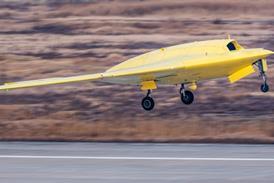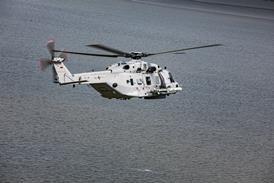Political issues still cloud the way forward as the European Commission (EC) and Eurocontrol prepare to launch the “definition” phase of the SESAME programme that is designed to set a masterplan for harmonised air traffic navigation operations and standards.
EC transport commissioner Jacques Barrot and Victor Aguado, director general of Eurocontrol, Europe’s air traffic management (ATM) co-ordinator, announced at the Paris Air Show in June that the definition phase of SESAME would be launched once a contract has been signed with the Air Traffic Alliance consortium.
This group, consisting of EADS, Airbus and Thales, was established to co-operate on ATM development. They will be backed by an executive committee made up of 29 industry representatives from airlines, airports, air navigation service providers (ANSPs) and the ATM industry (see box below), with more expected to join.
Once the definition phase has set the agenda for Europe’s ATM for the period 2007-2020, the implementation phase will kick off. “There is a lot of work to be done, but the impressive level of commitment and expectations of the industry in this project is a guarantee for success,” said Barrot. SESAME aims to move Europe’s ATM away from its present fragmented technological approach and towards a unified and integrated environment.
“The definition phase of SESAME will produce the ATM masterplan for Europe that will formulate operational concepts and propose new systems, as well as define the road map for their implementation. It will require a collective effort bringing together the full range of stakeholders,” says Aguado.
The European air transport industry has given a broad welcome to the plan. But given the failure of past attempts to harmonise European airspace, there are lingering worries about whether SESAME will be able to deliver on its promises. “Too many good ideas in air transport have failed to become operational because they failed to gain universal support,” says Mike Ambrose, director general of the European Regions Airline Association.
Speaking at the official launch of the “definition” phase of the project at the Paris Air Show, chairman of the SESAME executive committee Olaf Dlugi said that the group would work on the basis of consensus, with voting as a last resort. However, some industry stakeholders are not happy with the fact that the EC and Eurocontrol will each have voting rights of 33% under current proposals, effectively providing them with a veto should they be in agreement.
CANSO, the trade body for ANSPs and a strong supporter of SESAME, is less than impressed with this idea, complaining that it goes against the EC’s own principle of a separation between service provision and regulation that has taken hold across Europe since the launch of the Single European Sky initiative in 2000 to reform Europe’s fragmented ATM system.
“This is largely an industry issue that should be decided between manufacturers, ANSPs and customers,” says CANSO secretary general Alexander ter Kuile, pointing to the more business-minded focus within ANSPs compared with the pre-Single European Sky era, and the recent rapprochement between CANSO and IATA after years of disagreement, centred on the issue of charging. Ter Kuile says he would like to see a more even approach to voting rights.
This is all set against a background of disquiet among ANSPs that Eurocontrol continues to straddle both the regulatory and service provision sides of the business.
Since the launch of the Single Sky initiative, ANSPs have tended to take a much more commercial attitude to business, and they increasingly see Eurocontrol as a competitor, and are thus resentful of its regulatory role.
Europe’s new safety agency EASA is due to take over responsibility for safety for the ATM sector in 2010, raising further question marks over Eurocontrol’s future role. Observers are also quick to point out that the success rate of government and Eurocontrol efforts to harmonise ATM operations over the years is not that great.
However, there is a genuine willingness and a hope among all parties that SESAME will deliver – not least because failure would raise the spectre of delays spiralling out of control if present traffic growth rates are maintained into the next decade.
COLIN BAKER PARIS
Source: Airline Business























